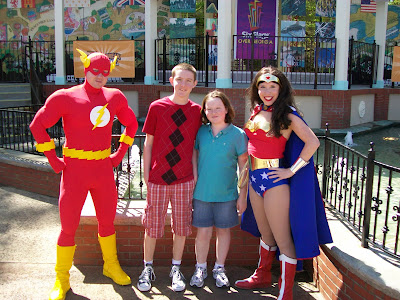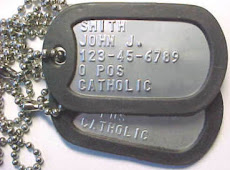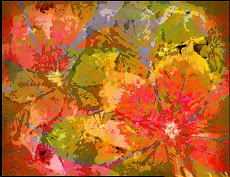
I got this from a friend and thought is was interesting. Just another question to the many already asked and researched. But I wonder if the truth will ever be known and if they will be able to get any DNA and track it into day?
In 1988, researchers tested the famous “Shroud of Turin” by snipping a tiny piece from the edge of the cloth and subjecting it to a radiocarbon dating process. The cloth was conclusively dated as no earlier than the 12th century and no later than the 14th – and that, seemingly, was that.
The Shroud of Turin is a centuries-old piece of cloth that appears to bear the image of a crucified man in his early thirties. It has been revered as the burial shroud of Christ by the Catholic Church for centuries.
I admit that fact alone increased my level of skepticism to the point that I instantly accepted the radiocarbon dating results and put it out of my mind.
I assumed the Shroud was just another of the thousands of Vatican ‘relics’ imbued with magical powers, like the piece of the One True Cross and the Crown of Thorns at the Notre Dame Cathedral in Paris.
The History Channel just ran a special about the Shroud of Turin that has rekindled the debate about the Shroud. Unfortunately, I haven’t seen it, since it hasn’t been broadcast in my area, but the buzz about the program piqued my interest.
The more I looked into the new evidence now available, the less skeptical I’ve become about the authenticity of the Shroud of Turin.
As it happens, new evidence proves that the carbon dating method was defective; the portion that was dated was along the edges. There are numerous paintings from medieval times of the Shroud being displayed by its custodians. Every single painting shows the Shroud being held at the same place along the edge.
The material chosen for the 1988 test was taken from exactly that place where it had been reinforced in medieval times for such displays. That the samples were non-representative, and from a medieval reinforced section of the edge has since been conclusively established and peer-reviewed.
The actual fibers of the shroud itself are not medieval cotton, but linen fibers characteristic of 1st century Israel. The threads are made from flax fibers that are but one-fifth the thickness of human hair. They were spun together by hand.
These fibers somehow reacted chemically, creating a photo-negative image not visible until the Shroud was first photographed in 1898.
The image could not have been forged, certainly not 700 years before photography and photo negatives were invented. Even assuming the possibility of a 12 century forgery, several problems remain unresolved.
First, how was it done? Second, why can’t it be reproduced in the 21st century? (It can’t) Third, why, even if it were possible, would someone in the 12th to 14th century paint a photo-negative image when a positive image would be more convincing to the naked eye?
Finally, since it is the only example of its kind in history, we have to assume some genius of antiquity invented a new way to create pictures, created exactly one, and then the technology vanished from history. Those are a lot of problems to overcome in order to argue the Shroud is a forgery.
The Turin Shroud was examined with visible and ultraviolet spectrometry, infrared spectrometry, x-ray fluorescence spectrometry, thermography, pyrolysis-mass-spectrometry, lasermicroprobe Raman analyses, and microchemical testing.
No evidence for pigments (paint, dye or stains) or artist's media was found anywhere on the Shroud.
Additional analysis of samples showed the bloodstains tested positive for 13 different blood components and human DNA. One of the blood chemists on the team, Dr Alan Adler, wrote of his findings:
“The blood marks seen on the Shroud are consistent with a contact transfer of the cloth of blood clot exudates that would have resulted from major wounds inflicted on a man who died upright as a result of crucifixion.”
If the Shroud is genuine, then our salvation was accomplished by the shedding of Type AB Positive blood on our behalf.
Assessment:
To recap, the Shroud of Turin is 14 feet long. The image it shows is of a man with nail prints in his hands and feet, bloodstains and wounds to the head consistent with having worn a crown of thorns, and a wound in his side.
The scourge marks on the shoulders, back, and legs of the man of the Shroud match the flagrum (Roman whip) which has three leather thongs, each having two lead or bone pellets (plumbatae) on the end.
The lance wound in the right side matches the Roman Hasta (4cm x 1 cm spear wound). Iron nails (7" spikes) were used in the wrist area (versus the palms as commonly depicted in medieval art).
These marks, combined with the capping of thorns which is not found anywhere else in Crucifixion literature of ancient Roman (Tacitus, Suetonius, Pliny the Elder or Pliny the Younger) or Jewish historians (Flavius Joesphus, Philo of Alexandria) create a unique signature of the historical Jesus of Nazareth.
According to the results of the STURP Project after having spent three full years analyzing the latest data:
“There are no chemical or physical methods known which can account for the totality of the image, nor can any combination of physical, chemical, biological or medical circumstances explain the image adequately. . .”
“. . . We can conclude for now that the Shroud image is of a real human form of a scourged, crucified man. It is not the product of an artist. The bloodstains are composed of hemoglobin and give a positive test for serum albumin.”
While the bloodstains soak through the cloth, the image itself is superficial – it is so thin it could be shaved off with a razor. It is no thicker than the wall of a soap bubble.
The image only appears on one side of the cloth, facing the body. And while the image is there, spectra-analysis shows there are no substances on the cloth to account for it.
Interestingly, the study also found that threads of the Shroud are saturated with pollen and plant material residue. Near the head of the image was a concentration of pollen from the plant Gundelia tournefortii, also known as the
Crown of Thorns.
We saw this plant during our visit to Israel last year. The only place in the world where this plant grows is in an area within fifty miles of Jerusalem. Spices found on the shroud are also found only in Israel, including one that grows only in an area within six miles of Jerusalem.
Dr. Garza-Valdes discovered oak tubules (microscopic splinters) in the blood of the occipital area (back of the head) as well as natron salts consistent with crucifixion on a Cross of oak. Traces of aloe and myrrh have also been identified on the cloth.
Dr. Avinoam Danin, a Professor of Botany at Hebrew University in Jerusalem identified many of the flowers on the Shroud as being spring flowers, consistent with the Passover.
“It appears that bunches or bouquets of flowers were once placed on the Shroud, leaving pollen grains and imprints of plants and flowers on the linen cloth. It provides important evidence regarding the origin of this cloth in the Holy Land, and indicates that the Man of the Shroud was entombed with flowers from the waist up to the head.”
Finally, the most important finding of all – the perfection of the image itself. The image was recorded in much the same way as a photograph – had the body been in contact with the cloth for a longer or shorter period of time then it actually was, the image would have either been over or under-exposed.
The debunking of the 1988 Carbon 14 dating was the final bit of evidence to the contrary – indeed, it was the ONLY significant contradictory evidence.
And so, what then, is left to say? Is this the actual burial shroud of the Lord Jesus Christ? Is the image that of the Lord of Glory? Do we actually have a ‘photograph’ of our Lord? Can we actually type the Blood whereby we were justified?
I believe that the answer to those questions is a definite "Yes!"
I am now convinced by the evidence that the Shroud must be genuine. If it is not, then it is the image of somebody else who was scourged by a Roman whip, nailed to a piece of oak with 7” Roman nails, pierced by a Roman spear and wore a crown of thorns made from a plant that grows only around Jerusalem.
That image was somehow miraculously and perfectly imprinted on the Shroud and then preserved for two thousand years -- for no good theological reason. An image that just happens to correspond in every possible detail with the Bible account of the Crucifixion.
I don't have enough faith in coincidences to buy into that argument.
Jesus Christ was crucified in Jerusalem and then removed from the Cross and laid in a burial shroud. Three days later, the shroud was found neatly folded in the empty tomb.
How did the image get there? Jesus rose from the dead. The napkin that covered His face was folded neatly beside it.
That imagery is also consistent with the customs of the day. When the master finished eating, he would wad up his napkin and throw it on the plate, signifying he was finished and the table could be cleared.
If he were temporarily excusing himself before finishing, he would fold his napkin neatly beside his plate.
The folded napkin meant, “I’m coming back.”
.
.



















































.png)
%20Suit%20Makes%20The%20Man%201.jpg)

































